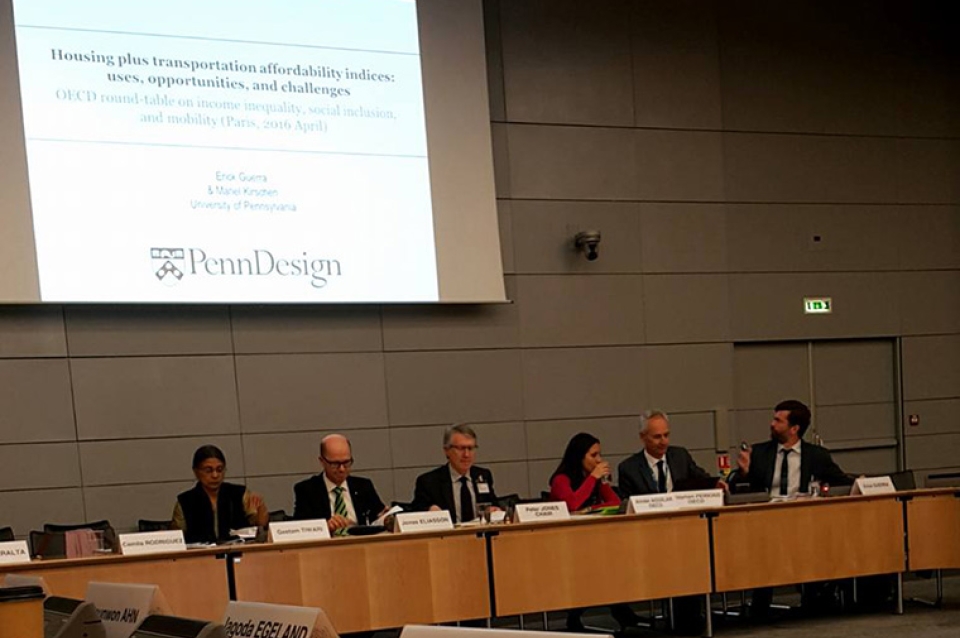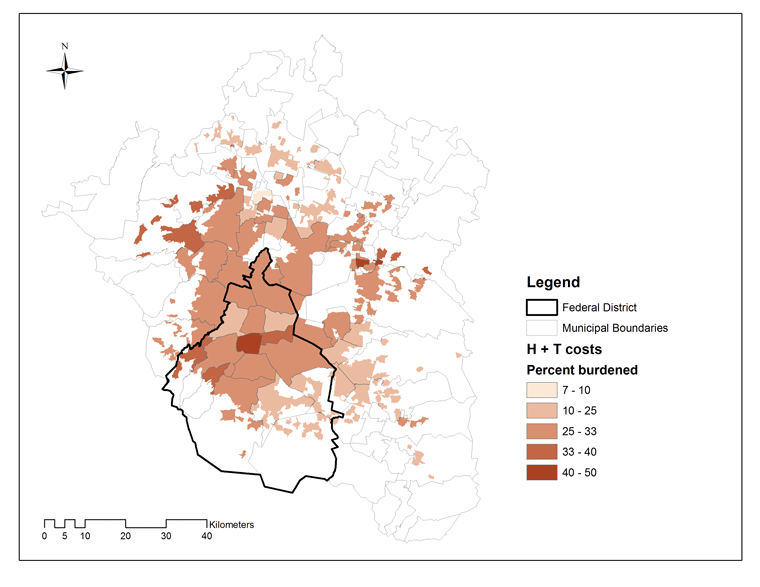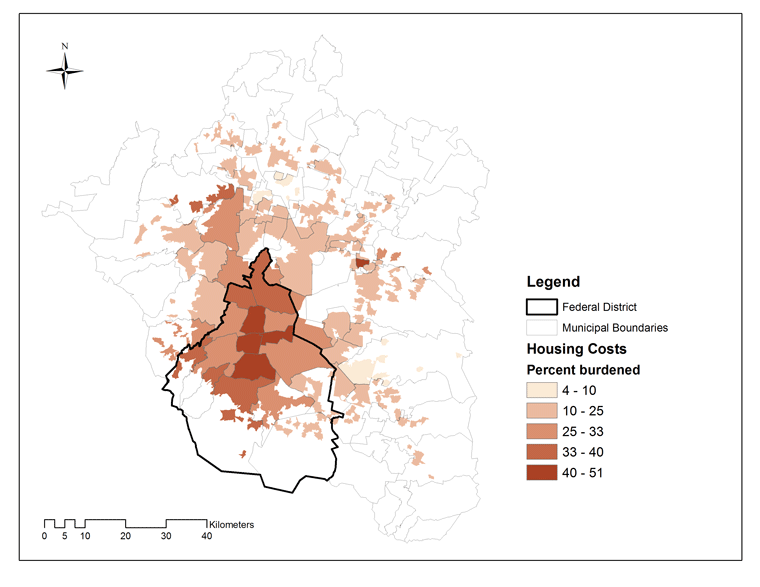April 20, 2016
Stuart Weitzman School of Design
102 Meyerson Hall
210 South 34th Street
Philadelphia, PA 19104
Get the latest Weitzman news in your Inbox
Media Contact
Michael Grant
mrgrant@design.upenn.edu
215.898.2539
Professor Guerra presented a paper on incorporating housing and transportation costs in measures of neighborhood affordability at a round-table on income inequality, social inclusion, and mobility at the Organisation for Economic Co-operation and Development (OECD) on April 4 and 5. After housing, transportation costs absorb the largest share of American households’ income. Failing to account for the higher transportation costs in remote neighborhoods has tended to encourage policies, plans, and regulations that exacerbate sprawl and locate households far from civic, social, and economic amenities and opportunities.
The paper, co-written with Mariel Kirschen (MCP 2017), describes the Center for Neighborhood Technology’s (CNT) H+T affordability index, its policy uses, and its critiques. It then describes some of the challenges and opportunities of applying the index in Mexico, applies a modified H+T index to the Mexico City metropolitan area, and examine the effect of accounting for transportation costs on maps and measures of housing affordability. Finally, the paper discusses of some of the opportunities and challenges of applying the H+T index in other OECD nations.
These maps show the proportion of households burdened by housing and transportation costs in the Mexico City region. When only accounting for housing costs, centrally-located households appear significantly more burdened. Source: Compiled by authors from state, municipal, and locality boundary files from the Instituto Nacional de Estadística y Geografía (INEGI, 2013) and calculations from the 2007 household travel survey (INEGI 2007).
Despite some of technical and contextual challenges, applying an H+T index to OECD countries and cities has the potential to:
• Strengthen the public and policy makers’ understanding of which countries, cities, and regions are most affordable;
• Encourage bank lending and the construction of affordable housing in neighborhoods with higher land costs but lower transportation costs; and
• Focus transit investments in a way that could help to reduce the amount that poorer households spend on transportation.


 Expand Image
Expand Image


